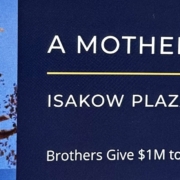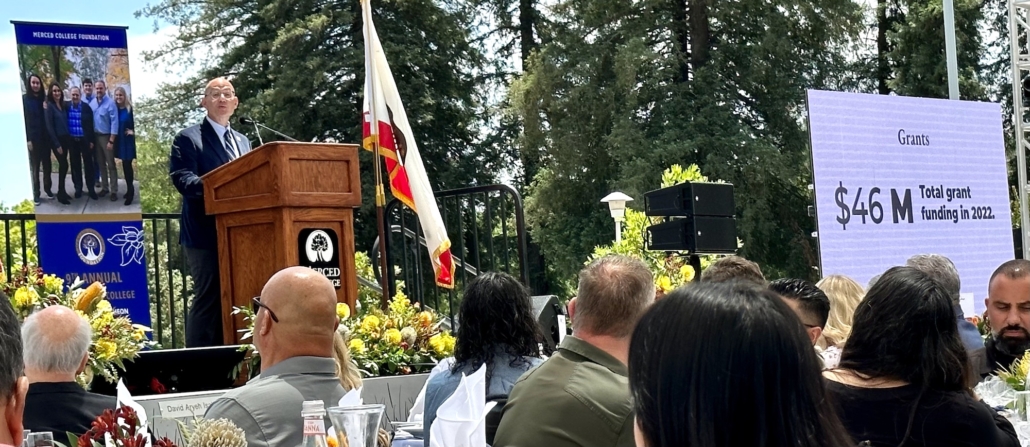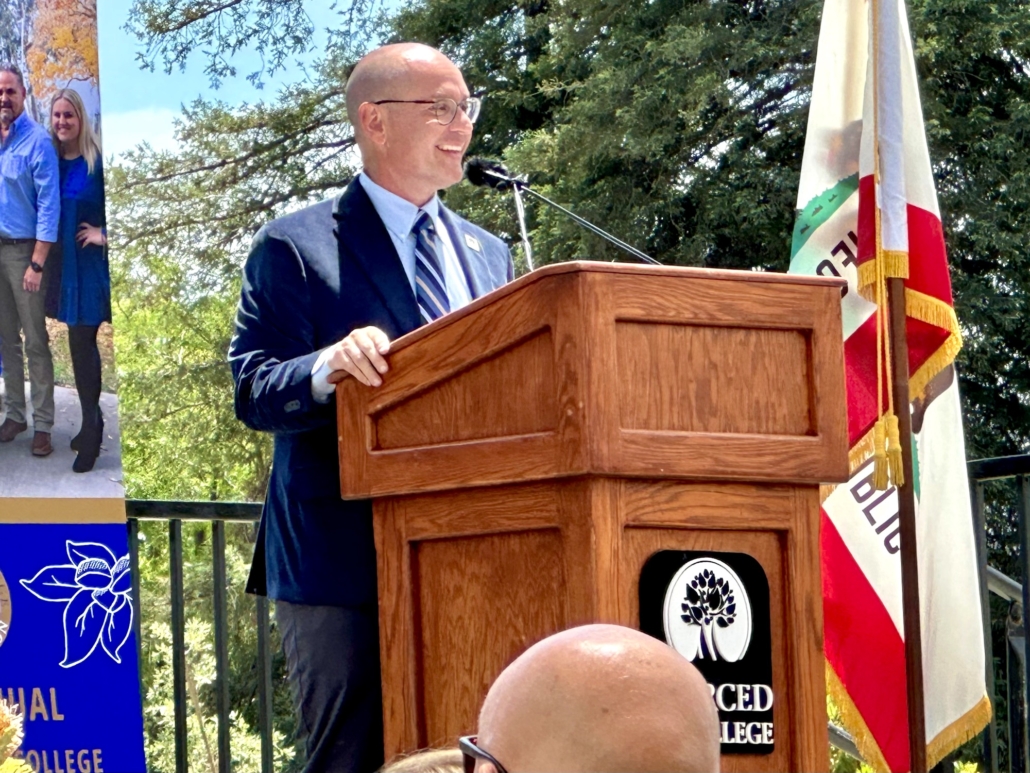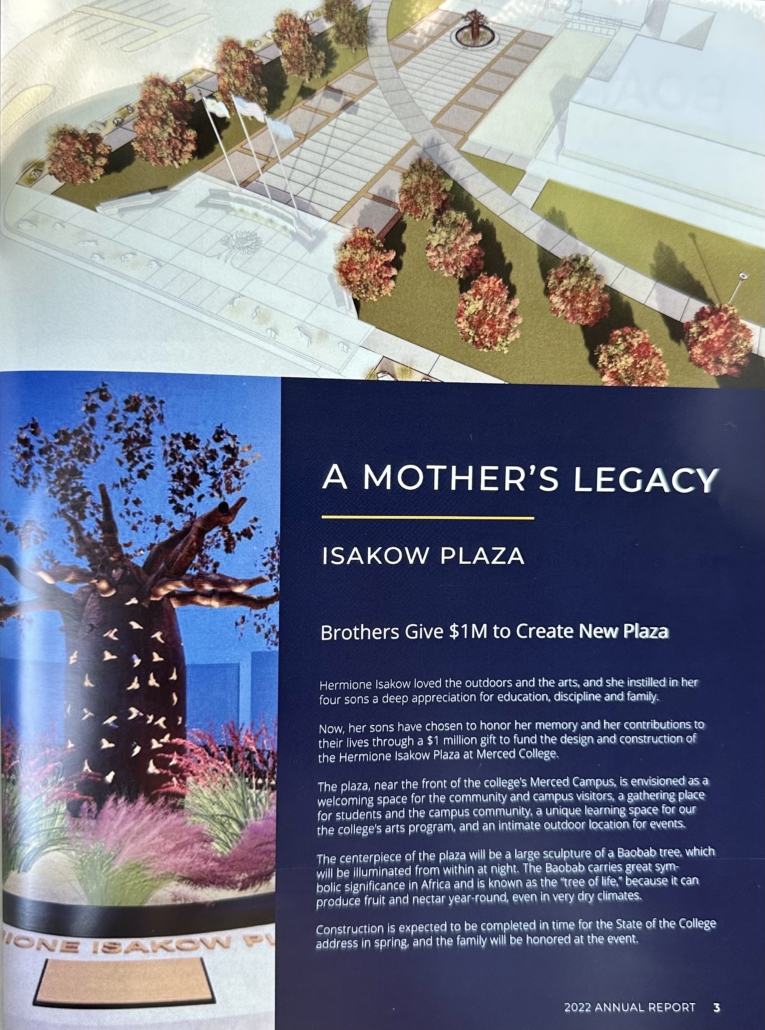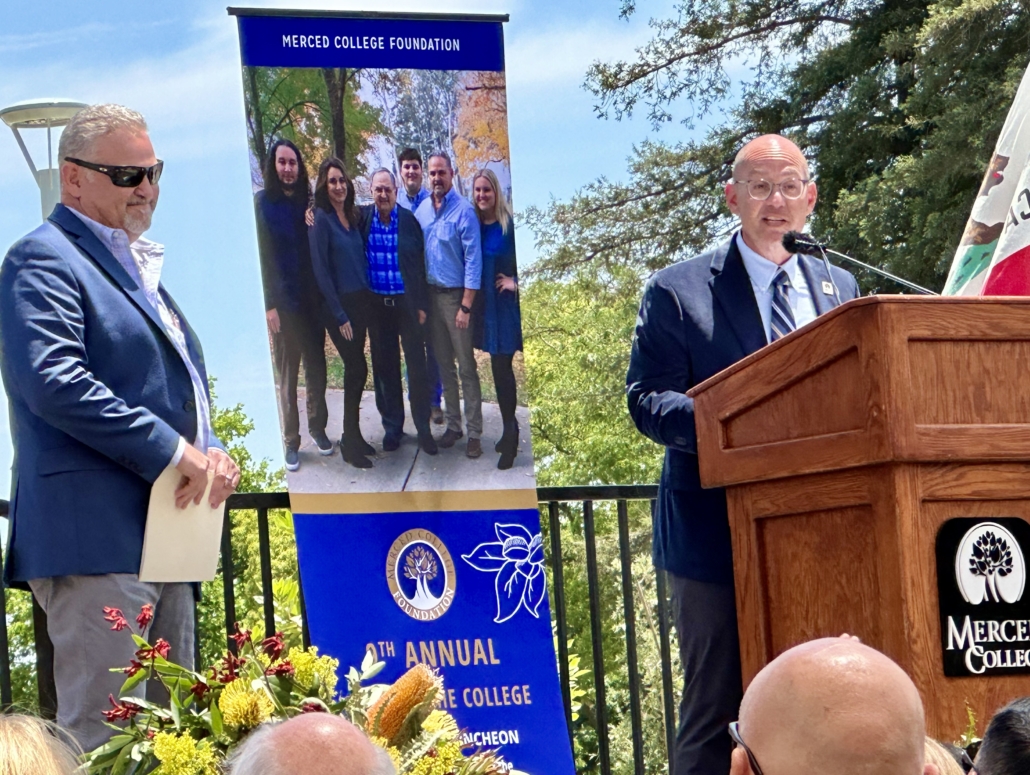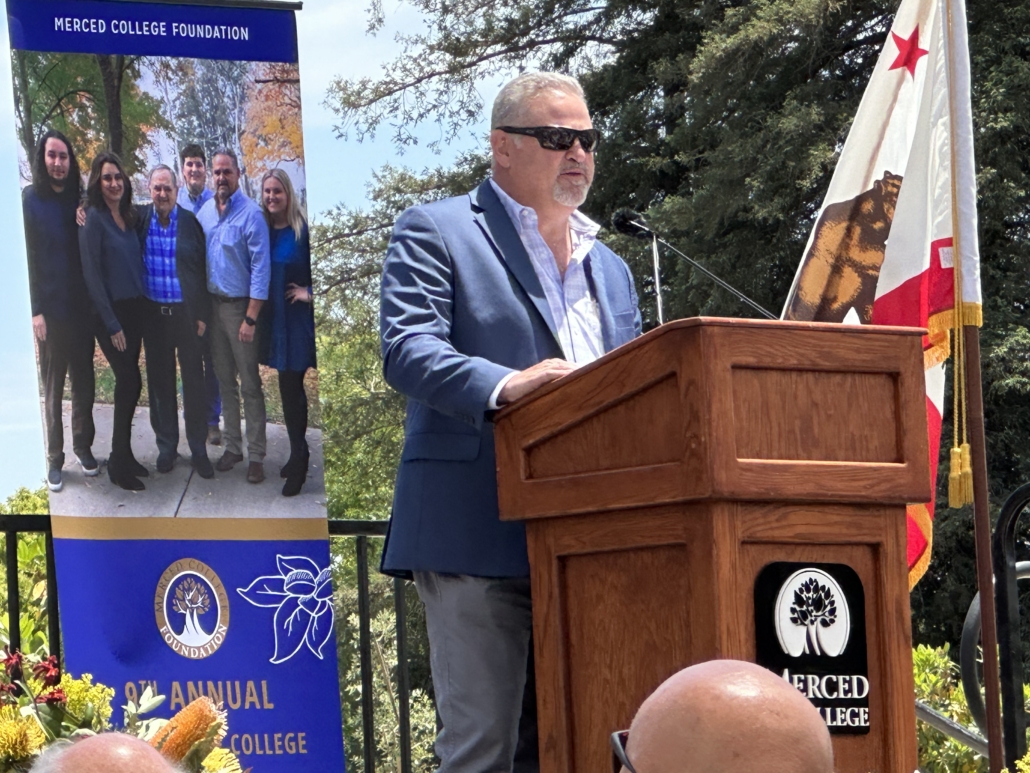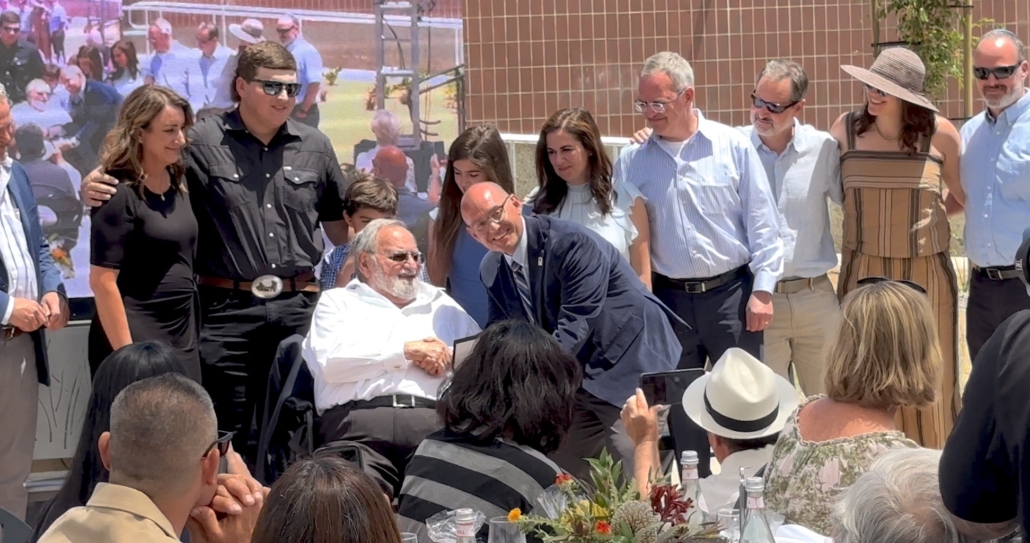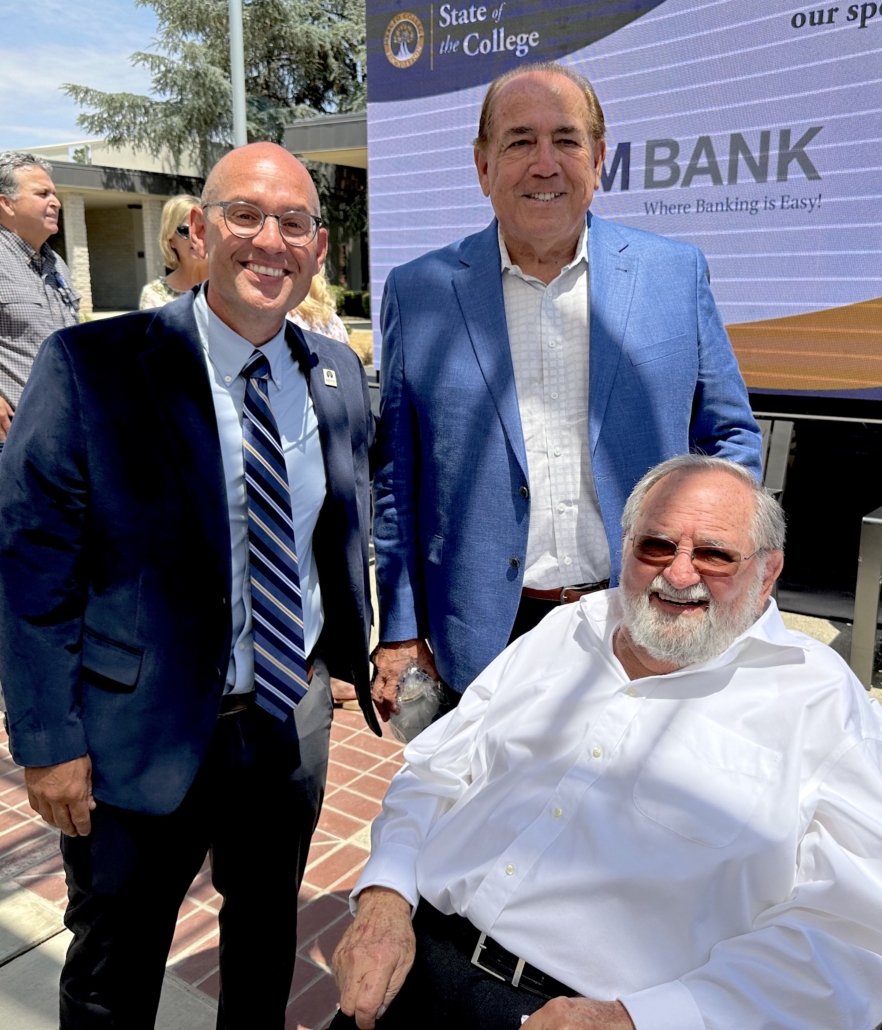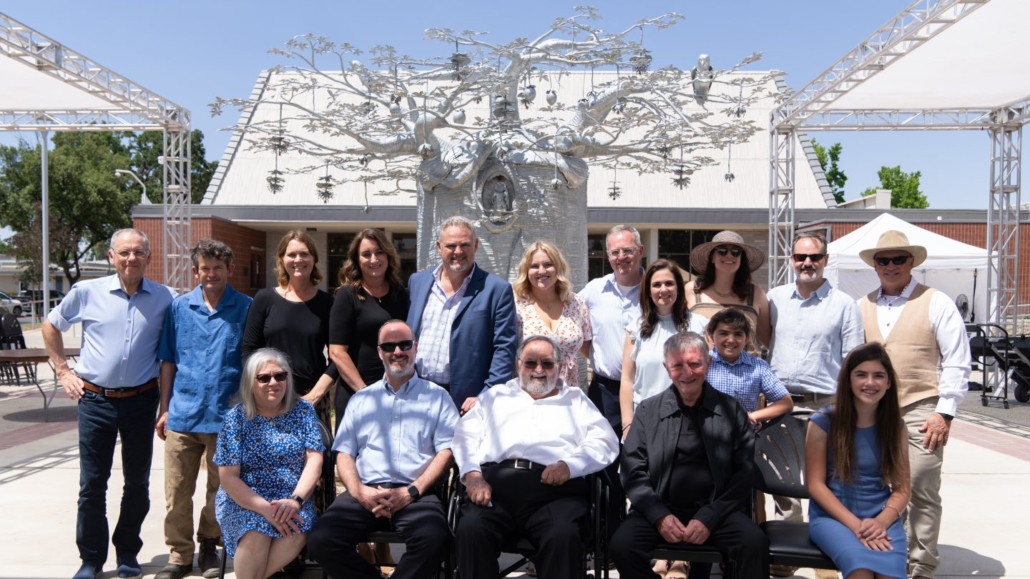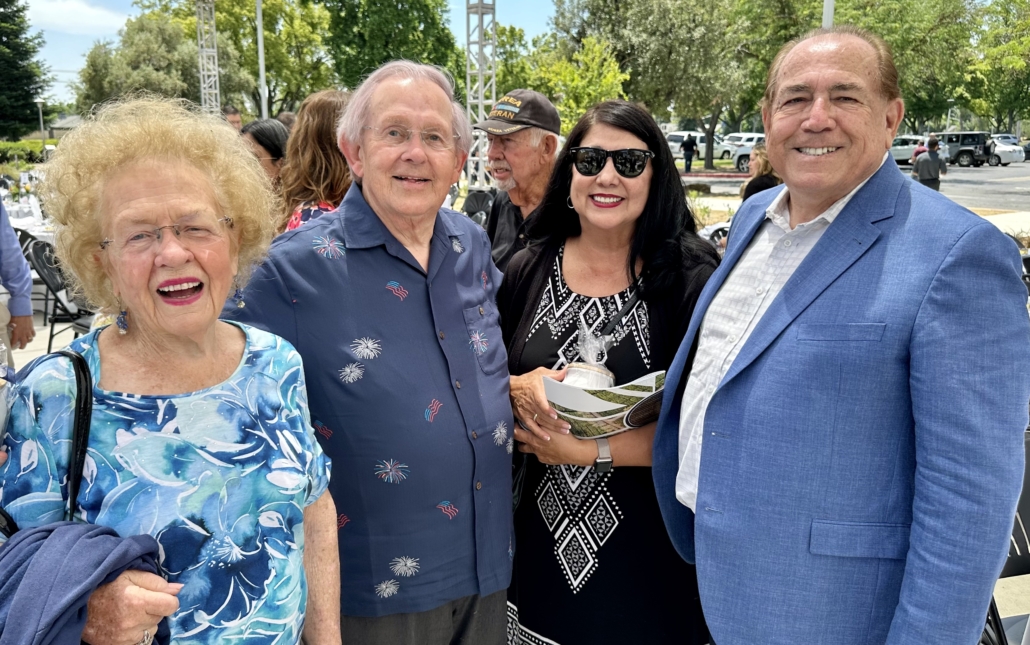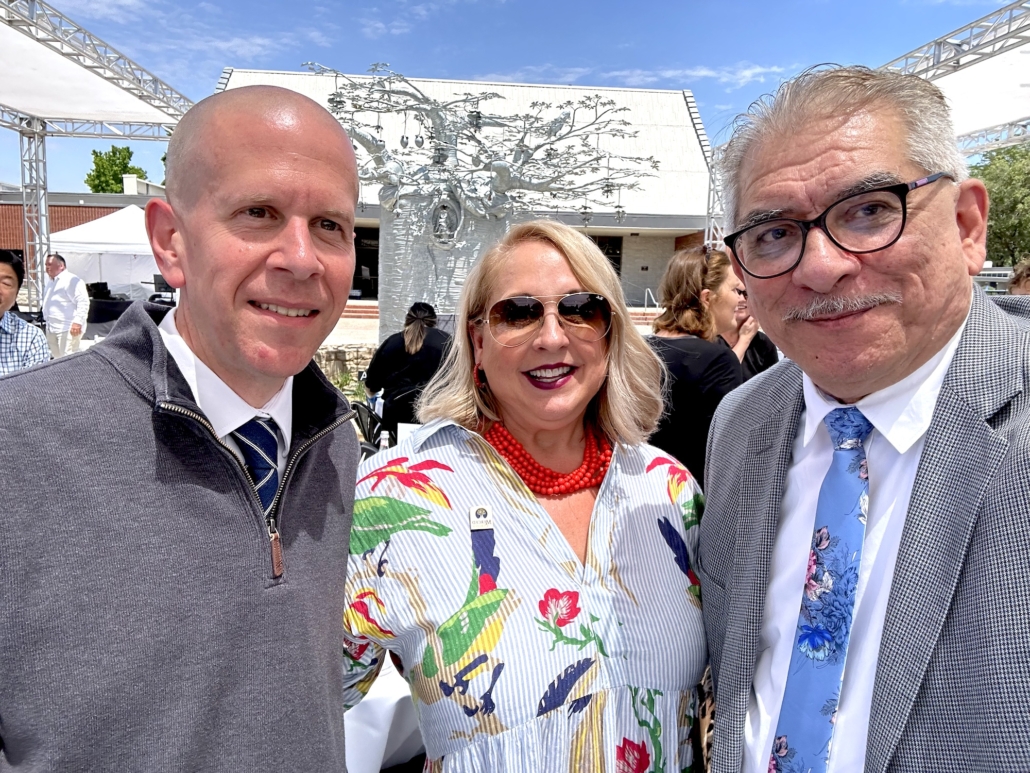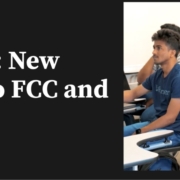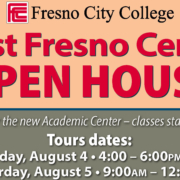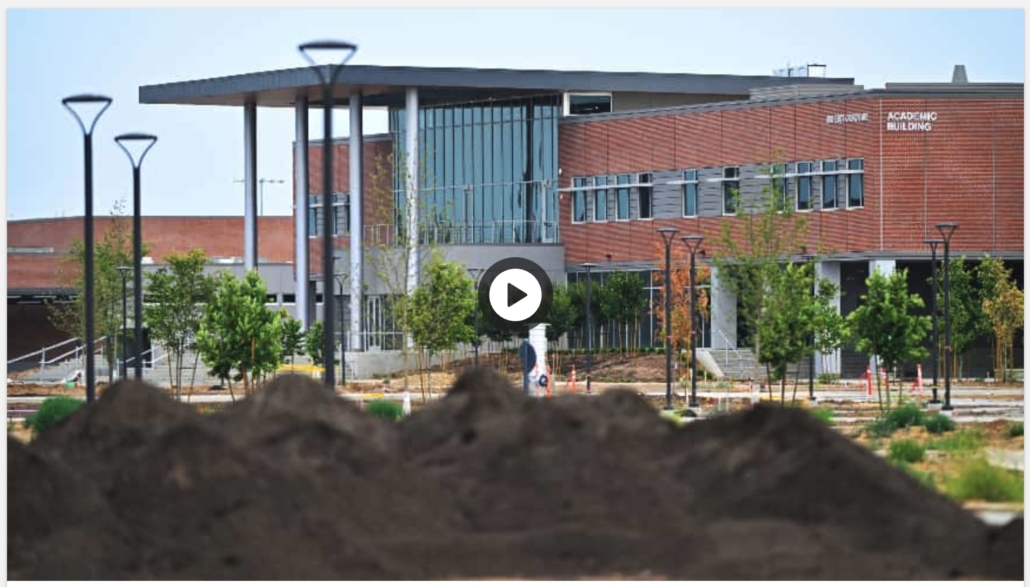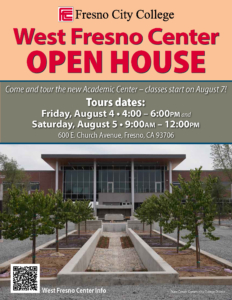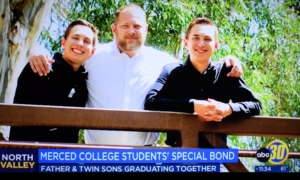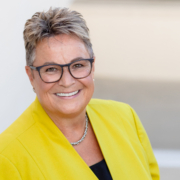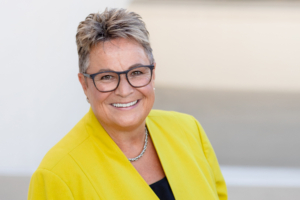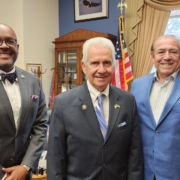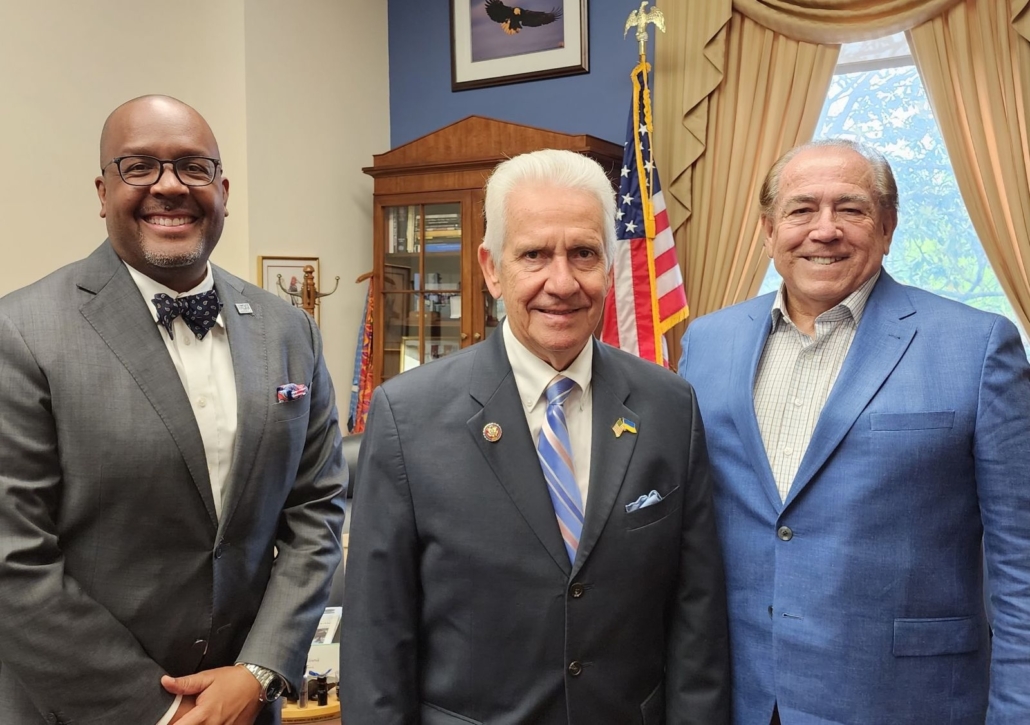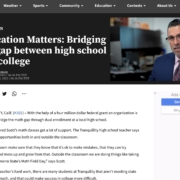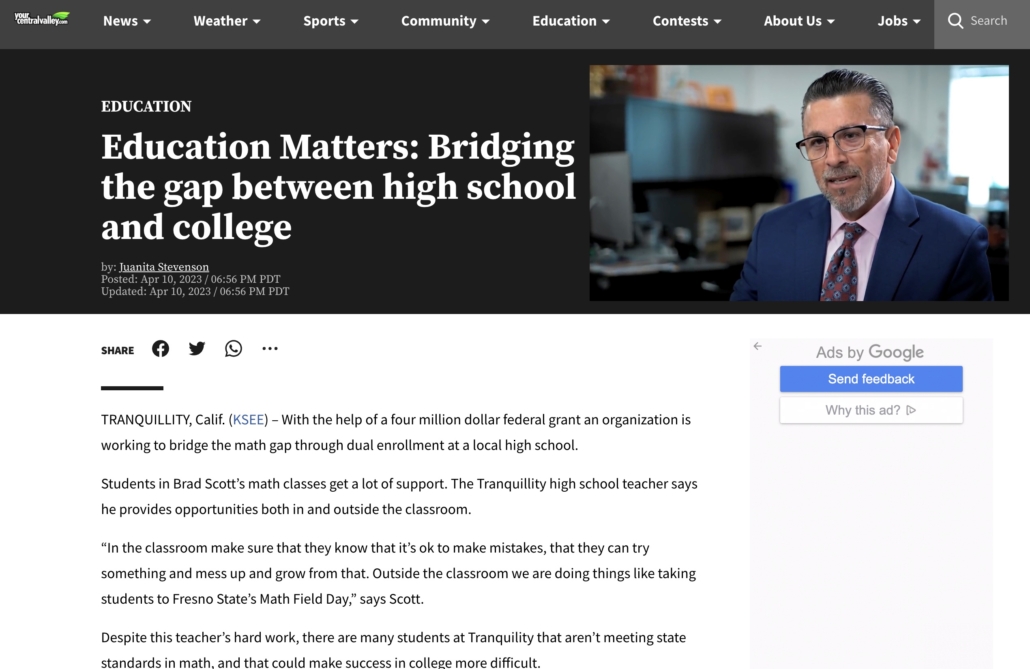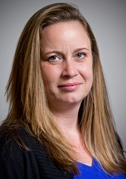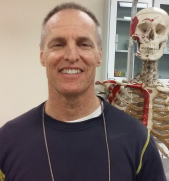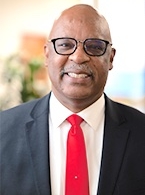MEMBER NEWS: New Merced College Isakow Plaza; Historic Commencements
New Merced College Plaza, sculpture unveiled at ‘State of the College;’
60th MC Commencement and first Los Baños campus commencement celebrated
In a one-week span culminating the spring semester, Merced College celebrated several milestones highlighted by its 60th commencement May 26 and followed by the unveiling of the new Hermione Isakow Plaza on campus during President Chris Vitelli’s State of the College address May 30.
And for the first time, a full commencement ceremony was held at MC’s Los Baños Campus on May 25.
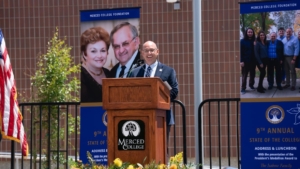 The ninth annual Merced College State of the College event was a celebration of the Isakow Family including presentation of the President’s Medallion Award — which recognizes the college’s greatest supporters — to the Isakow family with several family members present.
The ninth annual Merced College State of the College event was a celebration of the Isakow Family including presentation of the President’s Medallion Award — which recognizes the college’s greatest supporters — to the Isakow family with several family members present.
Located near the front of the campus, the plaza is envisioned as a welcoming space for the community and campus visitors, a gathering place for students and the campus community, a unique learning space for the college’s arts program, and an intimate outdoor location for events.
“The State of the College event is our opportunity to let the community know about all the innovative initiatives happening at Merced College, and to honor a family who has made such a generous contribution to our district,” said President Vitelli, a member of the Central Valley Higher Education Consortium Board of Directors.
“The Hermione Isakow Plaza is a beautiful addition to our Merced campus, providing an engaging new space that will be enjoyed by students and community members alike for decades to come.”
The event drew over 500 supporters including Dr. Benjamín Durán, president-emeritus of Merced College, who is now CVHEC executive director.
“It is aways a delight for me to return to Merced College where I began my college experience as a young student to ultimately having the privilege of serving as President,” Dr. Durán said.
“I was especially touched by the dedication of the Hermione Isakow Tree of Life, because as an immigrant, she understood that Merced College can serve as the tree of life for many of the immigrants attending the college.”
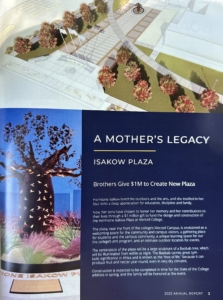 After living most of her life in South Africa, Hermione Isakow and her husband Leiz moved to Merced in 2010 to be closer to their eldest son Isaac and his family.
After living most of her life in South Africa, Hermione Isakow and her husband Leiz moved to Merced in 2010 to be closer to their eldest son Isaac and his family.
Hermione’s final years were clouded by a long bout with amyloidosis, and she died in 2020. In 2021, her sons chose to honor her memory and her contributions to their lives through a $1 million gift to fund the design and construction of the Hermione Isakow Plaza.
The centerpiece of the plaza is a large sculpture of a Baobab tree, which carries great symbolic significance in Africa and is known as the “tree of life,” because it produces fruit and nectar year-round and stores large amounts of water in its trunk, even in very dry climates.
Scott and Madelyn McGrath of McGrath Arts in Mariposa designed and built the 4,100-pound, galvanized steel sculpture, which stands at 15 feet tall and includes branches that span 20 feet. The tree is decorated with 3,000 hand-forged metal leaves, orb-shaped fruits, whydah birds, parrots, an owl in a lighted knothole, and 30 lighted flowers. The 6-foot-wide trunk is textured to represent holes made by elephants to pull water from the giant succulent.
The occasion was a fitting tribute to commencement milestones the previous week when the Merced College family noted six decades of graduation exercises and the establishment of the firsts commencement at the Los Baños campus where about 200 students participated in that ceremony held in the quad.
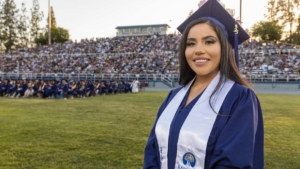 The Los Baños ceremony is the latest in a series of investments and initiatives to grow the campus and give Westside students a complete educational experience close to home.
The Los Baños ceremony is the latest in a series of investments and initiatives to grow the campus and give Westside students a complete educational experience close to home.
The campus will soon gain an outdoor gym, allowing the addition of three in-person kinesiology courses. A new campus café will provide hot meals and alleviate food insecurities. New faculty will be added in high-demand fields like welding, computer technology and information systems, and the college’s well-regarded, popular agriculture programs. Construction of a new Child Development Center, for both childcare and training, will be completed this summer.
“Our students already get a top-quality, reasonably priced education right here in their community, and now they can celebrate their graduation here, as well,” said Los Baños Campus Dean of Instruction Jessica Moran.
She called it “an inspiring moment for our graduates and their families, and a milestone for the growth and development of our community.”
Merced College media contact: James Leonard, james.leonard2@mccd.edu, 209-681-1061
See:
Full Merced College press release
Historic MC Commencement – press release
The Merced College Los Banos Campus – Inaugural Commencement

